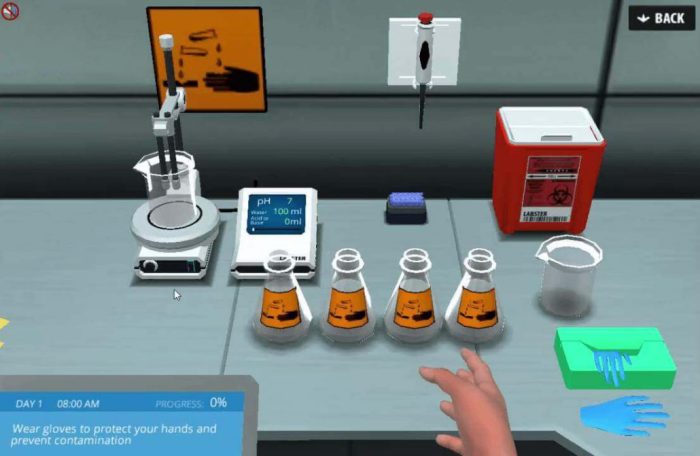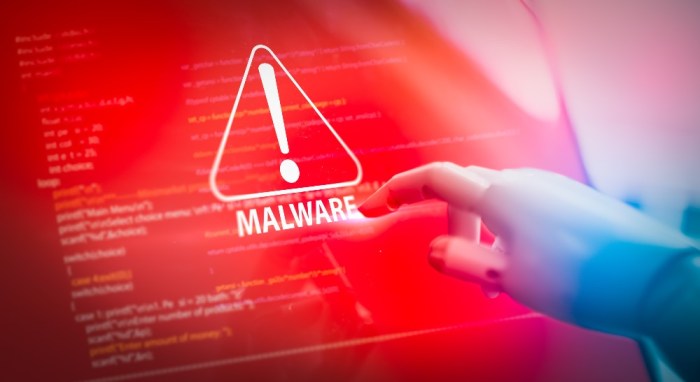Software lab simulation 16-1 downloading and using anti-malware software – Software Lab Simulation 16-1: Downloading and Using Anti-Malware Software delves into the crucial aspects of protecting your systems from malicious software. This comprehensive guide provides a step-by-step walkthrough of downloading, installing, and effectively utilizing anti-malware software to safeguard your digital assets.
As the digital landscape evolves, so too do the threats posed by malware. This simulation equips you with the knowledge and skills necessary to navigate this complex terrain, ensuring the security and integrity of your data and systems.
Understanding Software Lab Simulation 16-1

Software Lab Simulation 16-1 is an interactive learning tool designed to provide students with hands-on experience in detecting, analyzing, and removing malware.
The simulation covers key concepts in malware detection, including signature-based detection, heuristic analysis, and behavior-based analysis. It also introduces students to the use of anti-malware software and provides practice in using these tools to protect systems from malware infections.
Downloading and Installing Anti-Malware Software
To download and install anti-malware software, follow these steps:
- Visit the website of a reputable anti-malware software vendor.
- Select the anti-malware software product that best meets your needs.
- Click the “Download” button and save the installation file to your computer.
- Double-click the installation file and follow the on-screen instructions to install the software.
Using Anti-Malware Software
To use anti-malware software to scan and detect malware, follow these steps:
- Open the anti-malware software program.
- Click the “Scan” button.
- Select the type of scan you want to perform.
- Click the “Start” button.
Maintaining Anti-Malware Software, Software lab simulation 16-1 downloading and using anti-malware software
To keep your anti-malware software up-to-date and effective, follow these steps:
- Enable automatic updates.
- Set scan schedules.
- Perform regular manual scans.
Troubleshooting Anti-Malware Software
If you are experiencing problems with your anti-malware software, try the following troubleshooting steps:
- Make sure that your anti-malware software is up-to-date.
- Restart your computer.
- Contact the anti-malware software vendor for support.
Best Practices for Malware Prevention
To prevent malware infections, follow these best practices:
- Use strong passwords.
- Keep your software up-to-date.
- Be cautious when browsing the internet.
- Avoid clicking on links or opening attachments from unknown senders.
Case Studies and Real-World Examples
Here are some case studies and real-world examples of successful malware detection and prevention:
- In 2017, the WannaCry ransomware attack infected over 200,000 computers worldwide. The attack was stopped by a security researcher who discovered a kill switch in the malware’s code.
- In 2018, the NotPetya wiper attack infected over 100,000 computers worldwide. The attack caused billions of dollars in damage.
- In 2019, the Ryuk ransomware attack infected over 100,000 computers worldwide. The attack caused over $600 million in damage.
Question & Answer Hub: Software Lab Simulation 16-1 Downloading And Using Anti-malware Software
What is the primary objective of Software Lab Simulation 16-1?
The primary objective of Software Lab Simulation 16-1 is to provide a comprehensive understanding of how to download, install, and effectively use anti-malware software to protect systems from malicious software threats.
What are the key benefits of using anti-malware software?
Anti-malware software offers numerous benefits, including the detection and removal of malware, protection against malicious attacks, real-time monitoring and scanning, and automatic updates to ensure continuous protection.
How often should anti-malware software be updated?
Anti-malware software should be updated regularly, ideally on a daily or weekly basis, to ensure that it has the latest definitions and signatures to effectively detect and combat emerging malware threats.


